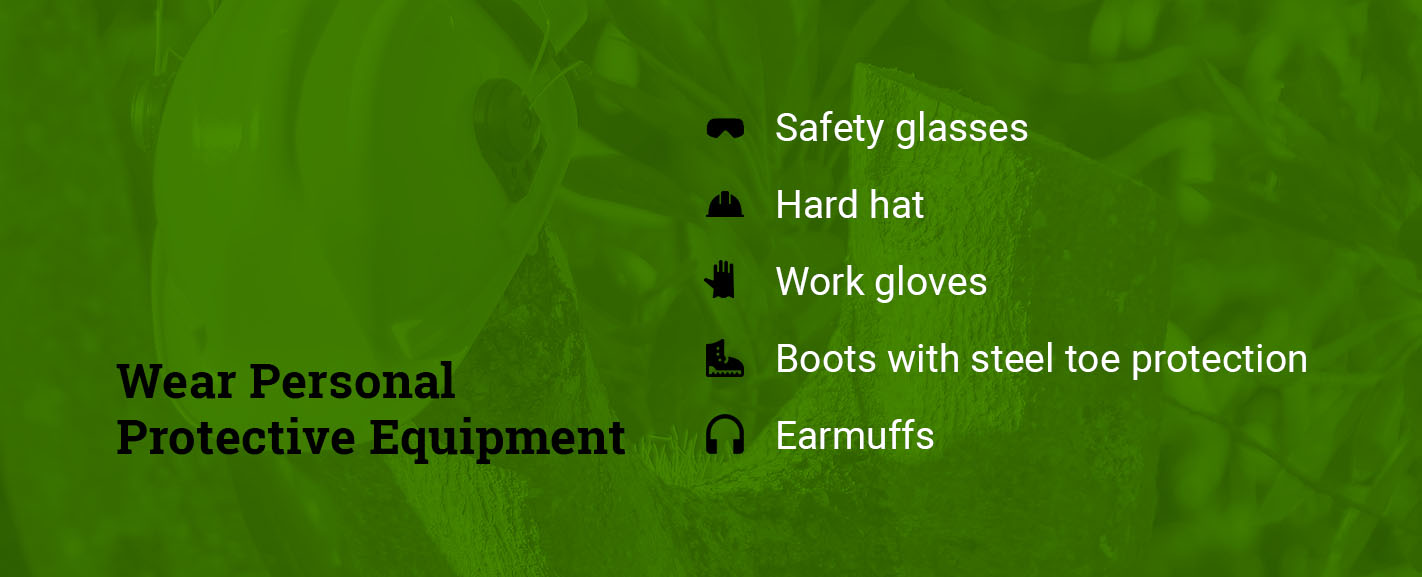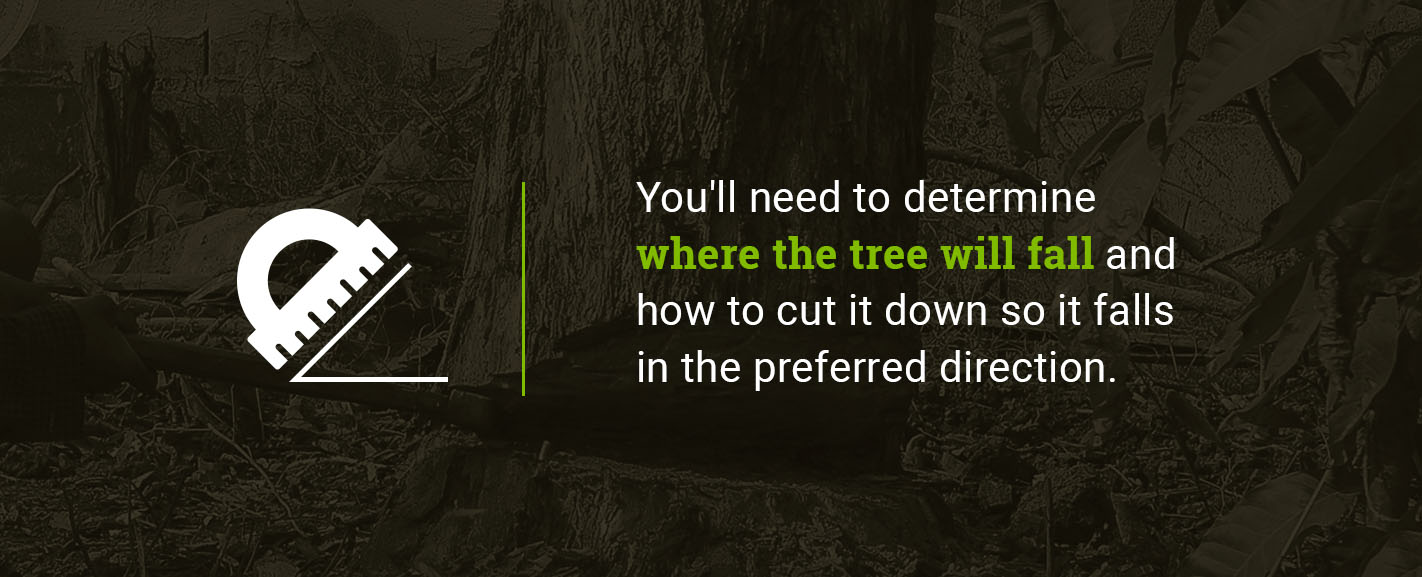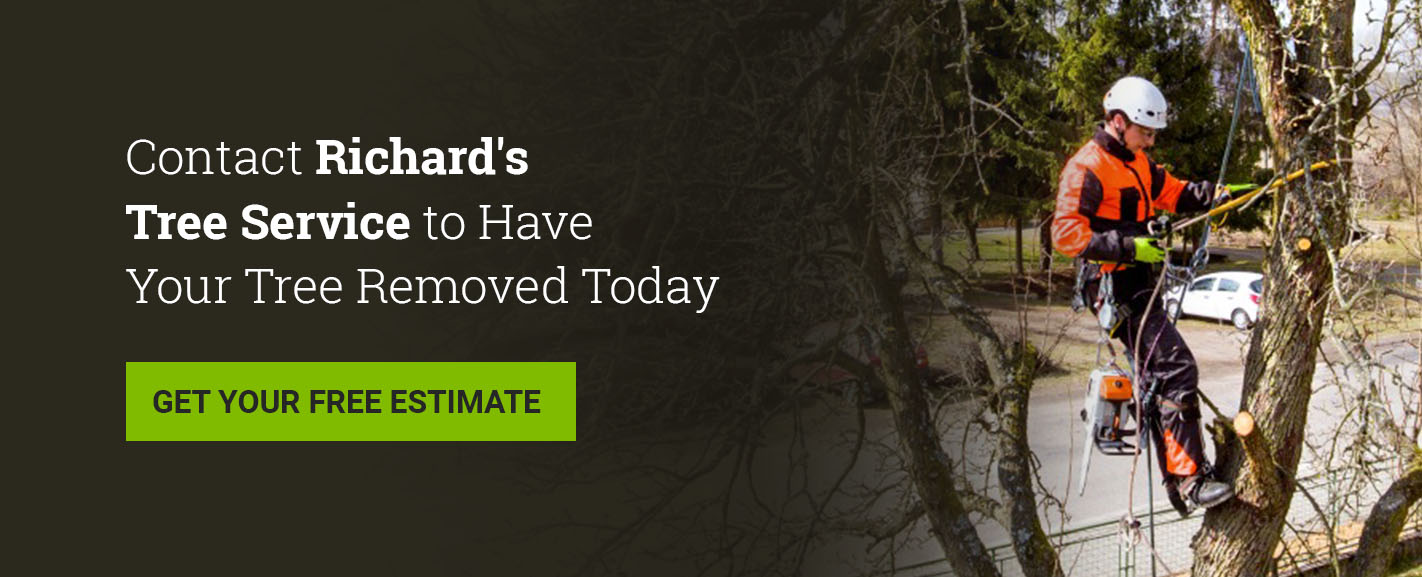
Removing a Tree Safely
While trees can imbue an area with beauty and grace, they can also cause serious problems if they’re diseased, infested, or growing too close to your foundation. It’s often necessary to remove a tree, despite the aesthetic benefits it may provide.
When removing a tree becomes essential, contacting a professional tree removal service to get the job done is always the safest choice. However, here are some tips on removing a tree if professional services are not an option for you.
Tree Removal Tips
Whatever the size of the tree, the most important consideration when removing a tree is your safety and the safety of anyone else in the vicinity. Cutting down a tree can cause significant damage or injury to nearby properties or people, so you’ll want to make sure you take every necessary precaution.
Wear Personal Protective Equipment (PPE)

Depending on the tools you use to remove the tree, there are various items you should put on before getting started. Those items may include:
- Safety glasses.
- Hard hat.
- Work gloves.
- Leather boots with solid ankle support and steel toe protection.
- Earmuffs and safety chaps, especially if you're using a chainsaw.
In addition to PPE, you should also ensure you're in the right state of mind to operate a chainsaw and cut down the tree. Tree removal requires you to be alert and keenly attuned to your surroundings so you can avoid any missteps that could have disastrous consequences. If you find you’re not mentally prepared for the task of tree removal, you may be better off contacting a tree removal service that can do a professional job.
Conduct a Safety Check On Your Chainsaw
After you’ve donned all of the appropriate PPE, make sure your necessary tools are in working order and maintain them as necessary. Most tree removal endeavors will require the use of a chainsaw. You’ll want to be familiar with chainsaw operation and maintenance if you plan to remove a tree yourself.
For maintenance of your chainsaw, evaluate the working order of the following:
- Chain brake
- Chain catch
- Chain lubrication
- Throttle lock
- Spark muffler
- The chainsaw’s overall appearance
Take Stock of Your Surroundings
Before you rev the engine and put the saw to the bark, look around you and check for potential hazards, such as obstacles on the ground or overhead power lines. Clear the area of any tripping hazards and make a plan to ensure the tree removal occurs without incident.
As you’re cutting the tree, it’s a good idea to have some extra eyes on the lookout to let you know of any potential dangers.
Make a Felling Plan
Ensure you have a strategic felling plan so that the tree falls in a safe area. You’ll need to determine where the tree will fall and how to cut it down so it falls in the preferred direction. If your tree is leaning too much one way, hiring a professional to remove the tree is highly recommended.
You should also plan escape routes to ensure you don’t get caught in a dangerous place as the tree falls. Your escape destination should be at least 15 feet away from the tree and 45 degrees from the felling target.

How to Remove a Small Tree
While the legal definition of a small tree is any tree that reaches a height no lower than 15 feet and no higher than 24 feet, we generally consider any tree up to 30-feet tall to be on the smaller side of the equation.
While removing a small tree is somewhat less complicated than a large tree, hazards remain. Finding a safe landing spot is typically easier with small trees. However, you’ll still want to take the same steps to safely cut down the tree as you would with a large tree. Those steps include:
- Picking the area to make your cuts comfortably.
- Cutting a notch into the "fall" side of the tree, cutting the top part first and the bottom part last.
- Positioning yourself so that you aren't at risk of injury.
- Making the felling cut on the other side of the tree a few inches above the midline of the notch.
- Ensuring the felling cut does not go all the way through to the notched side.
- Letting the tree fall from its weight and going to your designated safe area.
- Cutting the rest of the tree down to the stump.
How to Remove a Large Tree
Removing a large tree, generally any tree between 30 and 60 feet, requires a great deal of care and skill. As such, many people prefer to let professional tree removal services handle the removal of large trees, for good reason. Larger trees have greater potential for damage and it’s more challenging to find safe landing spots.
With that in mind, a sound felling plan is crucial for removing a large tree. Call a professional to get the job done if you have any concerns that the tree may fall and cause damage. In general, the steps to remove a large tree are the same as the small tree removal process. However, wedges are often necessary for large trees wide in diameter. The felling cut should also be in line with the midline of the notch, in contrast to small tree removals.
After the notch is made, the next step is to start the felling cut until you've gone far enough to pound in a wedge. Having a wedge in the tree will prevent the chainsaw from getting pinched if the tree leans back while you're cutting.
How to Remove a Tree Stump
Unless you’re planning to use the tree stump as a stool, you might be "stump-ed" about what to do with it after cutting the tree down. Leaving the stump can cause tripping hazards around the yard, get in the way of your yard plans or be a general eyesore. However, getting the stump out of the ground may seem like more trouble than it's worth.
Thankfully, there are ways you can remove the stump! Stump removal typically requires specialized tools known as stump grinders, which grind stumps down and reduce them to wood chips. While stump grinding does not remove the stump down to the roots, it does get it out of sight, solving the eyesore and tripping hazard problems.
If the tree is diseased or you’re constructing a building over the lot, a much longer and more arduous process that requires specialized, heavy-duty equipment can extract the stump and tree roots entirely.

Contact Richard’s Tree Service to Have Your Tree Removed Today
With all the considerations and precautions that go into removing a tree, you may find it less stressful to have your tree removed professionally. A trained and skilled arborist will possess all the equipment and know-how to safely and cleanly remove your tree.
At Richard’s Tree Service, our qualified arborists have a combined 75 years of experience removing trees and stumps of all shapes and sizes and preserving sick, diseased and dying trees. Contact us today for your free estimate! Our lines are open 24/7 and we can provide emergency services if necessary.
If it is an emergency please call us immediately at 703-354-3667.
Use this form to schedule a FREE estimate. After submitting your form, our team will contact you to set up this appointment.
